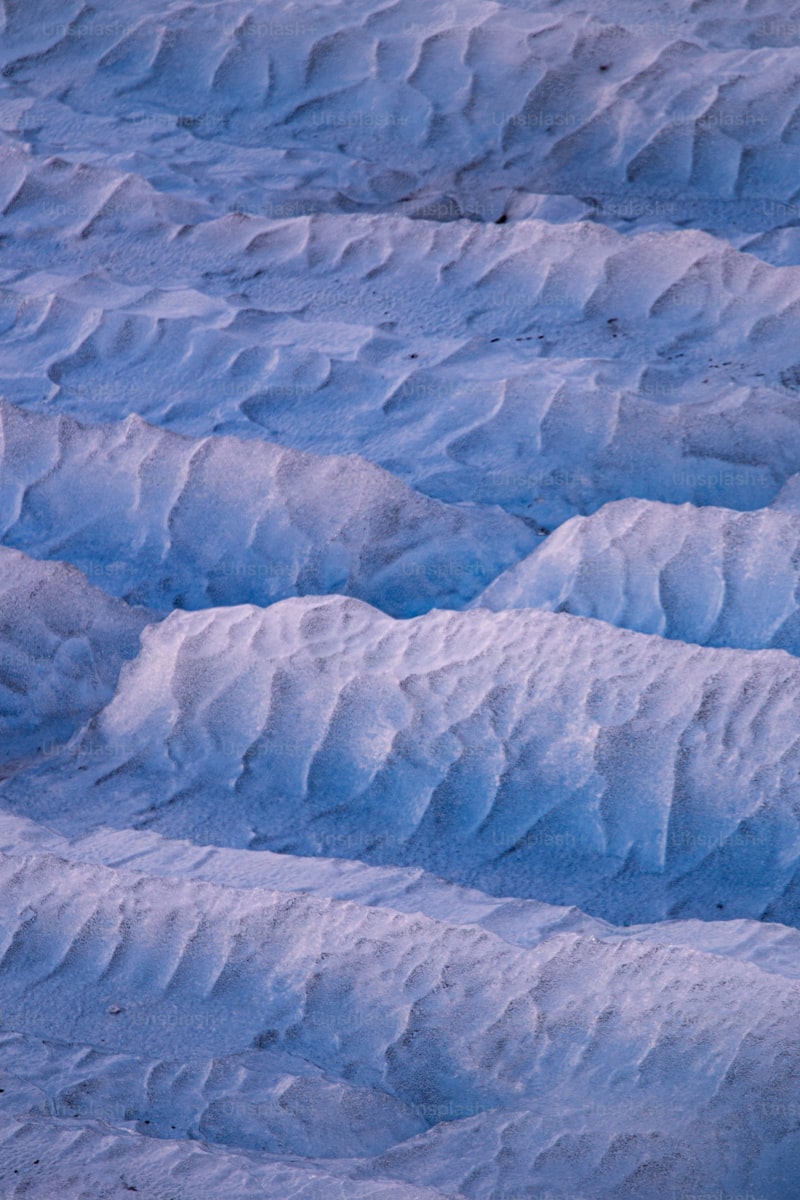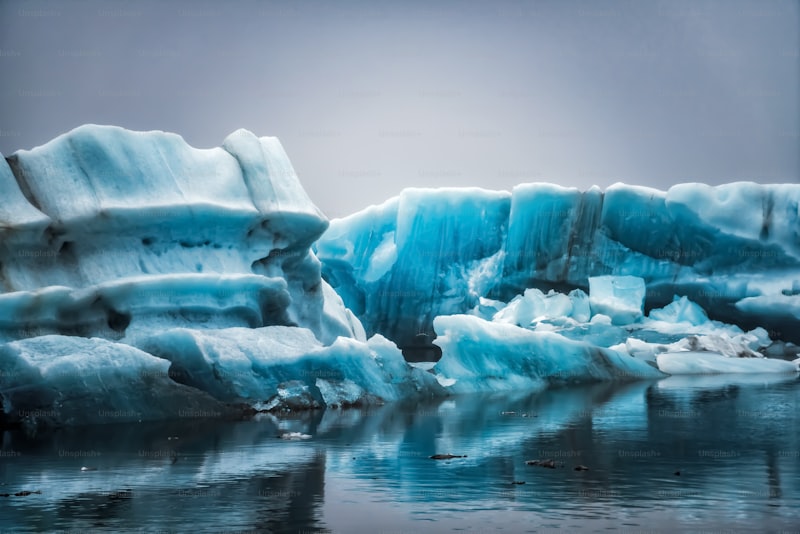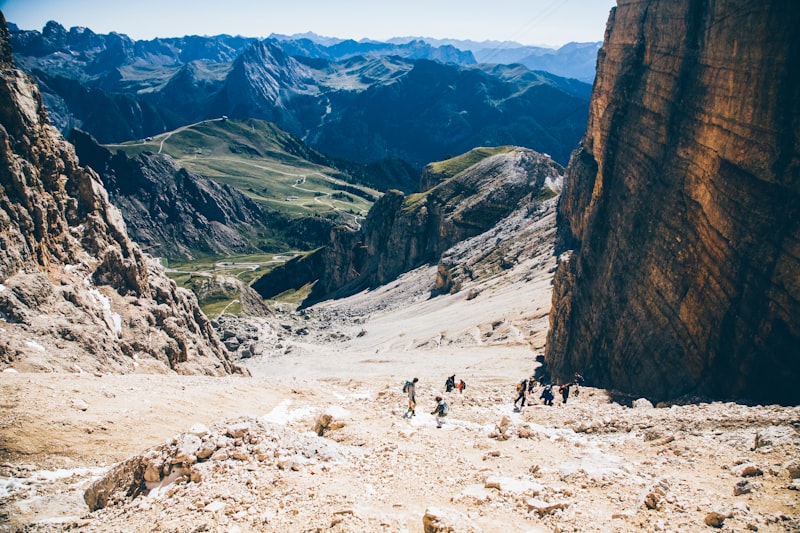Imagine a world where nature transforms water into breathtaking sculptures of ice. Natural ice formations, shaped by the elements over centuries, stand as marvels of Earth’s creativity. From delicate icicles dangling like crystal chandeliers to colossal ice caves carved into glaciers, each formation tells a story of freezing temperatures and patient craftsmanship.
One of the most stunning sights in winter is the icefall, where frozen water cascades down cliffs, freezing mid-air to create fantastical shapes. These ephemeral sculptures captivate with their sheer beauty, drawing visitors to witness nature’s artistry firsthand. In places like Iceland’s Vatnajökull National Park or Canada’s Johnston Canyon, icefalls create an otherworldly ambiance, inviting exploration and wonder.
Icebergs, massive chunks of ice floating in oceans, are another wonder of natural ice formations. These giants, born from glaciers calving into the sea, reveal only a fraction of their immense size above water. Sailing alongside these icy behemoths, one can appreciate their serene beauty and the forces that shape them.
Glacial ice caves offer a glimpse into a frozen underworld, where blue ice walls glow with an ethereal light. Formed by meltwater carving through glaciers, these caves are ephemeral, shifting with the glacier’s movements and melting with the changing seasons. Each visit to these caves is a unique experience, as light filters through the ice, creating a surreal atmosphere that photographers and adventurers alike find irresistible.

Moreover, ice sculptures crafted by freezing waterfalls or naturally occurring ice bridges spanning icy rivers are fascinating. These delicate formations appear transient yet stand resilient against the elements, showcasing nature’s ability to create beauty in harsh environments.
Frozen Marvels: Unveiling the Spectacular Beauty of Natural Ice Formations
Have you ever stood in awe of nature’s breathtaking creations? One of the most awe-inspiring sights on Earth is the formation of natural ice marvels. These stunning creations of ice and snow captivate the imagination with their sheer beauty and intricate designs, sculpted by the elements over centuries.
Imagine towering ice cliffs glistening under the winter sun, their surfaces polished to a pristine sheen. These ice formations, found in places like Antarctica, Greenland, and even closer to home in the Arctic regions, are more than just frozen water—they are nature’s sculptures, crafted with precision and artistry.
Each ice formation tells a story of its own. From the delicate icicles hanging like crystal chandeliers to the massive icebergs floating majestically in icy waters, these marvels of nature evoke a sense of wonder and admiration. They remind us of the raw power and beauty of our planet, where even the most extreme environments give birth to breathtaking spectacles.
Exploring these frozen marvels is like stepping into a world of fantasy and wonder. Picture yourself standing before a glacier, its icy blue hues shimmering under the Arctic sky. The silence around you is profound, broken only by the occasional crackle of shifting ice—a reminder of the dynamic forces at play in these frozen landscapes.
Natural ice formations also play a crucial role in the Earth’s ecosystem. They regulate climate patterns, reflect sunlight, and provide habitats for unique wildlife adapted to extreme cold. The delicate balance of these icy environments underscores their importance in the global ecosystem, urging us to appreciate and protect them.
Whether you’re an adventurer seeking the thrill of exploring remote icy landscapes or simply a nature enthusiast captivated by the beauty of frozen art, natural ice formations never fail to leave a lasting impression. They challenge our perceptions of what nature can create and inspire us to marvel at the wonders of our planet.
Nature’s Crystal Art: The Enchanting World of Natural Ice Sculptures
Imagine stepping into a world where nature itself becomes a master sculptor, crafting breathtaking artworks from ice and snow. These natural ice sculptures, formed by the delicate interplay of temperature, water, and time, create a mesmerizing spectacle that captivates the eye and stirs the soul.
Each winter, as temperatures plummet and water freezes, nature begins its artistic endeavor. From majestic ice caves sculpted by slowly flowing rivers to delicate ice formations adorning frozen waterfalls, every creation is unique, bearing the mark of its environment.
One of the most awe-inspiring displays of nature’s icy artistry can be found in frozen lakes and ponds. Here, perfectly clear ice sheets form, resembling polished glass that reflects the surrounding landscape like a mirror. These natural ice sheets often crack and refreeze, forming intricate patterns known as ice ferns or frost flowers, adding a delicate touch to the frozen canvas.
In colder regions, massive icicles hang from cliffs and rock formations, their translucent forms catching the sunlight in a dazzling display of natural beauty. Some of these ice formations grow to astonishing sizes, becoming natural ice sculptures that evoke both wonder and reverence.
Even in more temperate climates, winter storms can transform everyday objects into transient works of art. Frozen branches sparkle with a layer of frost, turning ordinary trees into glistening crystal sculptures that seem straight out of a fairy tale.
Nature’s ice sculptures are not just visually stunning; they also play a crucial role in ecosystems. Frozen lakes and rivers provide habitats for unique organisms adapted to survive in extreme cold. These environments support a delicate balance of life, where even the tiniest creatures thrive amidst the ice.
Exploring the world of natural ice sculptures is like entering a gallery where every exhibit tells a story of resilience and beauty. It reminds us of nature’s ability to create wonders beyond human imagination, where each icy formation is a testament to the intricate dance between the elements.
In this frozen world, time seems to stand still, allowing us to marvel at nature’s crystal artistry and contemplate the delicate balance that sustains our planet.
Chasing Ice: Exploring Earth’s Most Breathtaking Frozen Creations
Imagine standing at the edge of a massive glacier, where the world seems to pause in awe-inspiring silence. This is the allure of chasing ice – the pursuit of Earth’s most breathtaking frozen creations. From the Arctic to Antarctica, these icy giants hold secrets of our planet’s history and future.
Glaciers, immense rivers of ice, sculpt landscapes over millennia. They flow slowly, shaping valleys and fjords with their immense weight. Each glacier is a time capsule, preserving ancient air bubbles that reveal clues about past climates. As temperatures rise, these frozen giants melt, contributing to sea level rise and impacting global weather patterns.
Antarctica, a continent covered in ice, holds the largest ice sheet on Earth. Its vast glaciers calve massive icebergs into the Southern Ocean, a spectacle of nature’s raw power. The Antarctic Peninsula, with its towering ice cliffs and deep blue crevasses, offers a glimpse into a world rarely seen by humans.
In the Arctic, the polar ice cap floats over the Arctic Ocean, its beauty and fragility stark against a backdrop of changing temperatures. Here, polar bears roam across sea ice, hunting seals amid stunning ice formations. The Northern Lights dance above frozen landscapes, painting the sky with ethereal colors.
Glacial caves, formed by meltwater carving through ice, create surreal underground worlds. These icy cathedrals, with walls glowing blue from compressed ice crystals, evoke a sense of wonder and reverence. Explorers brave extreme conditions to document these fleeting marvels before they vanish.
Chasing ice isn’t just about witnessing nature’s grandeur; it’s about understanding our planet’s delicate balance. As temperatures warm, these frozen landscapes transform, reminding us of the urgent need for environmental stewardship. Each ice formation tells a story – of resilience, adaptation, and the interconnectedness of Earth’s ecosystems.
Join the journey of chasing ice, where every glacier, iceberg, and ice cave tells a tale of beauty and change. Explore these frozen realms, and discover the profound impact of climate change on our planet’s icy wonders.
Icy Masterpieces: Discovering the Geological Secrets Behind Natural Ice Formations
Imagine stepping into a world where nature sculpts its own masterpieces out of ice—majestic and breathtaking formations that defy imagination. Natural ice formations, often found in polar regions and high-altitude mountain ranges, hold within them the fascinating secrets of Earth’s geological processes.
These icy marvels, ranging from towering icebergs to delicate icicles, are created through a combination of temperature, precipitation, and time. High in the mountains, freezing temperatures transform water into stunning ice formations that can span vast landscapes. Each formation tells a story of climatic conditions, with layers of ice revealing ancient atmospheric compositions and environmental changes over millennia.
One of the most iconic natural ice formations is the glacier. Glaciers form over centuries as snow accumulates, compresses, and recrystallizes into dense ice sheets that flow under their own weight. These massive rivers of ice shape valleys and carve out fjords, leaving behind landscapes that showcase the raw power of ice as a geological force.
In polar regions, icebergs present another awe-inspiring sight. These floating behemoths, calved from glaciers or ice shelves, drift through frigid waters with intricate shapes and sizes. They serve as a reminder of the dynamic nature of ice and its integral role in shaping Earth’s climate and geography.
Moreover, natural ice caves and tunnels offer explorers a glimpse into hidden worlds beneath the surface. Carved by meltwater and geothermal heat, these ephemeral structures provide scientists with valuable insights into climate history and the resilience of life in extreme environments.
Natural ice formations are not merely static sculptures; they are dynamic archives of Earth’s geological past and present. From glaciers to icebergs and ice caves, each formation invites us to contemplate the beauty and power of ice as both an artist and a storyteller of our planet’s history.
This article aims to capture the wonder and geological significance of natural ice formations while maintaining an engaging and informative tone suitable for readers interested in nature and science topics.
Nature’s Frozen Symphony: The Science and Serenity of Ice Formations

Imagine a world where nature transforms water into breathtaking sculptures, each one unique in its formation and delicate in its beauty. This magical realm exists in the intricate patterns of ice formations found across the globe. From the frost-kissed windows on a chilly morning to the expansive glaciers that carve through mountains, ice shapes the landscapes we admire and the climates we inhabit.
Ice formations are not merely frozen water; they are nature’s architects, creating structures that defy imagination. Each snowflake that settles gently on the ground, with its intricate crystalline lattice, is a testament to the complexity of ice formation. Under the right conditions of temperature and humidity, these tiny crystals unite to form larger structures, from delicate icicles hanging from rooftops to massive icebergs adrift in polar seas.

The science behind these formations is as fascinating as their visual appeal. Ice formation begins with the crystallization of water molecules, aligning themselves in patterns that determine the shape and structure of the ice. Factors such as air temperature, wind speed, and even the purity of the water influence how ice crystals grow and evolve. For instance, rapid freezing produces clear ice, while slower freezing traps air bubbles, creating the opaque textures seen in frozen lakes.
Beyond their scientific intricacies, ice formations evoke a sense of serenity and wonder. They reflect light in ways that dazzle the eye, from the iridescent sheen of frost on a leaf to the ethereal glow of ice caves illuminated by sunlight. Each formation tells a silent story of the changing seasons and the resilience of nature in adapting to its environment.
Exploring the world of ice formations unveils a blend of science and artistry that captivates the imagination. It invites us to ponder the delicate balance of natural forces that shape our planet’s landscapes and to appreciate the fleeting beauty of these frozen wonders. As we marvel at nature’s frozen symphony, we are reminded of the profound interconnectedness between the elements and our place within the ever-evolving tapestry of the natural world.
Frequently Asked Questions
Where can you find stunning natural ice formations around the world?
Discover breathtaking natural ice formations from around the globe, showcasing the most stunning locations where these formations occur naturally.
What are natural ice formations and how do they occur?
Discover how natural ice formations like glaciers and icebergs form through a process of compacted snow that gradually transforms under immense pressure over centuries. Learn about the conditions necessary for their formation and their role in shaping Earth’s landscapes.
What are the best times of year to witness natural ice formations?
Discover the optimal times of year to experience stunning natural ice formations in various regions. Learn when and where these formations occur most vividly, ensuring you witness their beauty at its peak.
What are the most famous natural ice caves and arches?
Explore the world’s most renowned natural ice caves and arches, showcasing nature’s breathtaking formations carved by ice over millennia. Discover iconic locations known for their stunning beauty and unique geological features.
How can you safely visit and explore natural ice formations?
Learn how to safely visit and explore natural ice formations with our concise guide, covering essential tips on assessing ice conditions, using proper equipment, and understanding safety protocols to ensure an enjoyable and secure experience.



